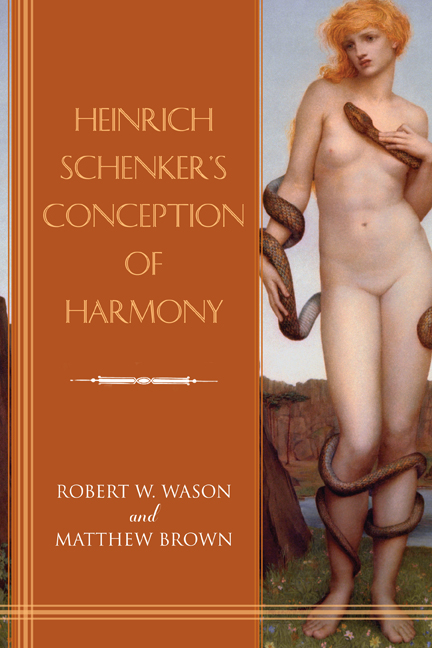6 - The Twilight of the Masters: Schenker’s Reinterpretation of the Classical Concept of Harmony
Published online by Cambridge University Press: 14 October 2020
Summary
One of the main goals of this project has been to demonstrate that Schenker’s Theory of Harmony (1906) is unlike other music theory treatises of the period or, for that matter, of any other period, past or present. The book and its satellite texts stand out on several counts. For one thing, they show that Schenker was less concerned with the nuts and bolts of chord structure and chord progression and more with showing how studying harmony enhances our appreciation of music as art. Gone are the model harmonizations and student exercises found in rival books about harmony; instead, Schenker set to illustrate “every verbally abstracted experience or proposition” with “a living example from the great masters themselves.” For another, the book and its satellite texts underscore the contempt that Schenker felt towards the works of other theorists and pedagogues, especially Jean-Philippe Rameau, Hugo Riemann, Ernst Friedrich Richter, Salomon Jadassohn, and Max Reger, and, to a more moderate degree, even his own teacher, Anton Bruckner. Schenker was clearly on a mission to correct what he regarded as fundamental errors in the way harmony was normally studied. His purpose in writing HL was to push the study of harmony in another direction and, as such, he wrote the book as much for professional music theorists as for beginners, despite his claim to the contrary.
Perhaps the most obvious way in which Schenker redirected the study of harmony was by reviving and reinterpreting the Classical meaning of the term, the one conveyed so evocatively by De Morgan in her canvas Cadmus and Harmonia. According to this definition, the word “harmony” refers not to individual chords or chord progressions, but rather, denotes the conceptual glue that binds together the disparate elements of a musical composition as a coherent whole. In this sense, the term is more closely related to the notions of organic unity and synthesis, ideas that Schenker no doubt absorbed from his classes in Greek and Latin at the Gymnasium. An obvious source for such ideas was surely Aristotle's Poetics, the most important treatise on aesthetics ever written and a work that Schenker doubtless encountered in his studies of Greek drama.
- Type
- Chapter
- Information
- Heinrich Schenker's Conception of Harmony , pp. 376 - 396Publisher: Boydell & BrewerPrint publication year: 2020



